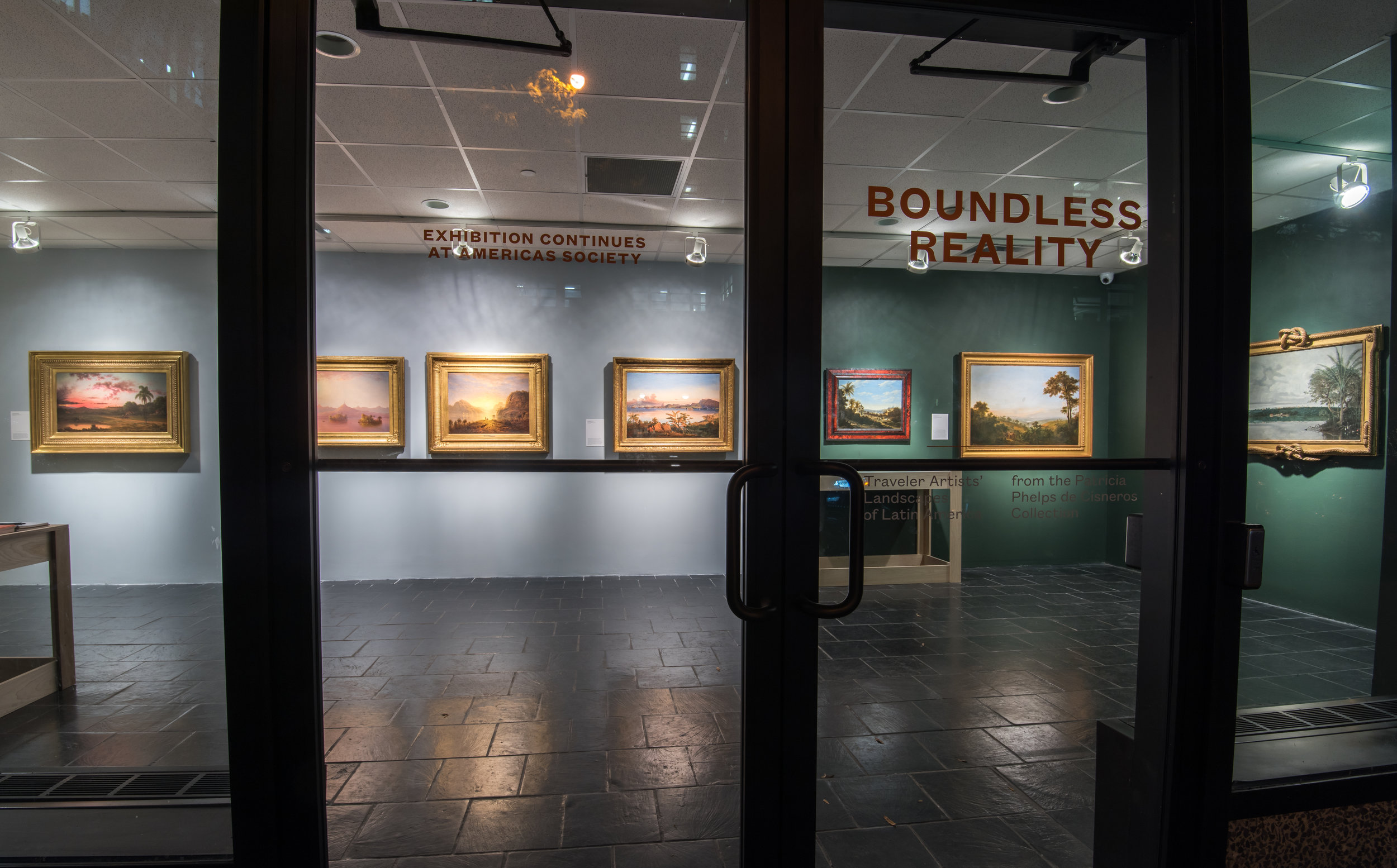
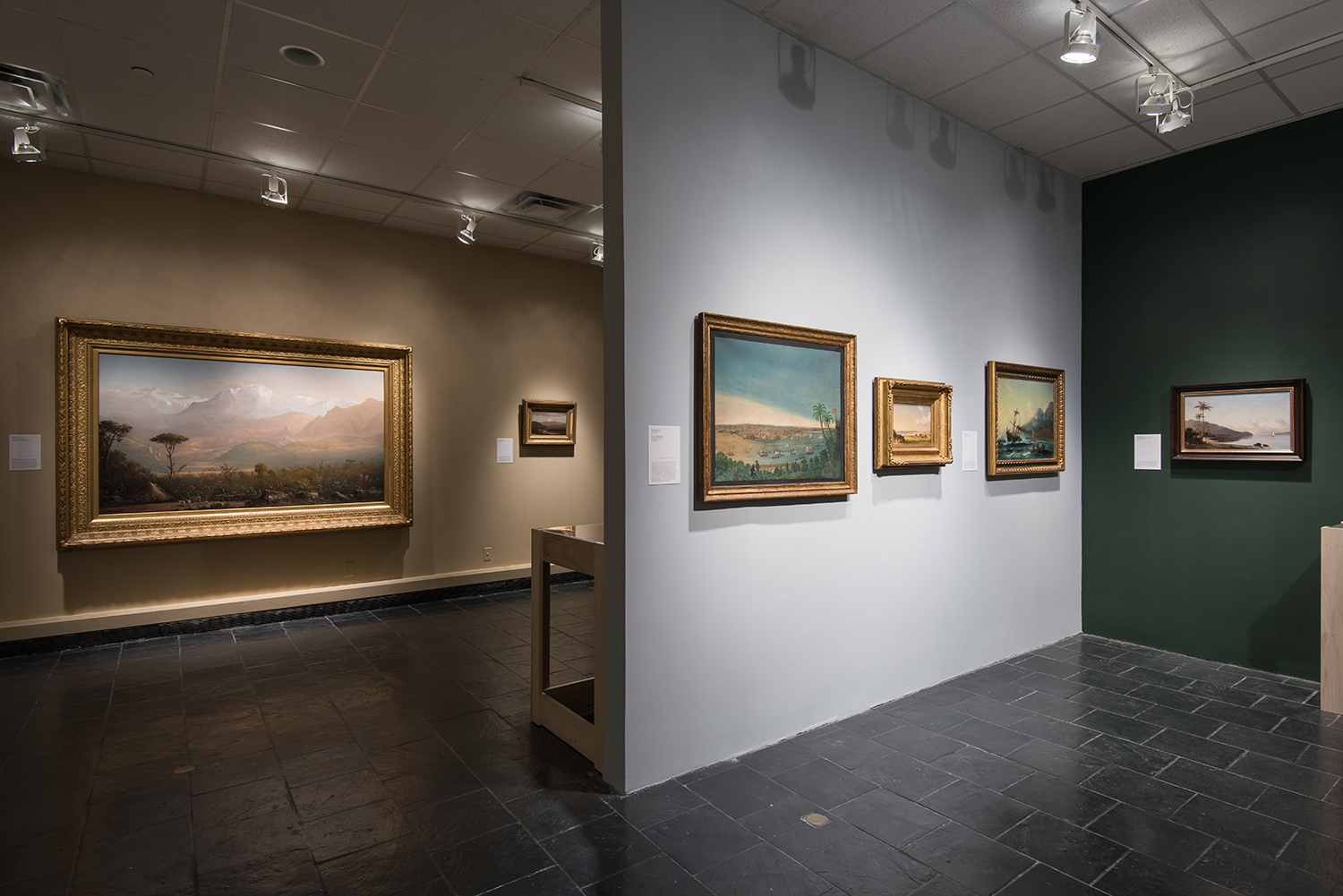

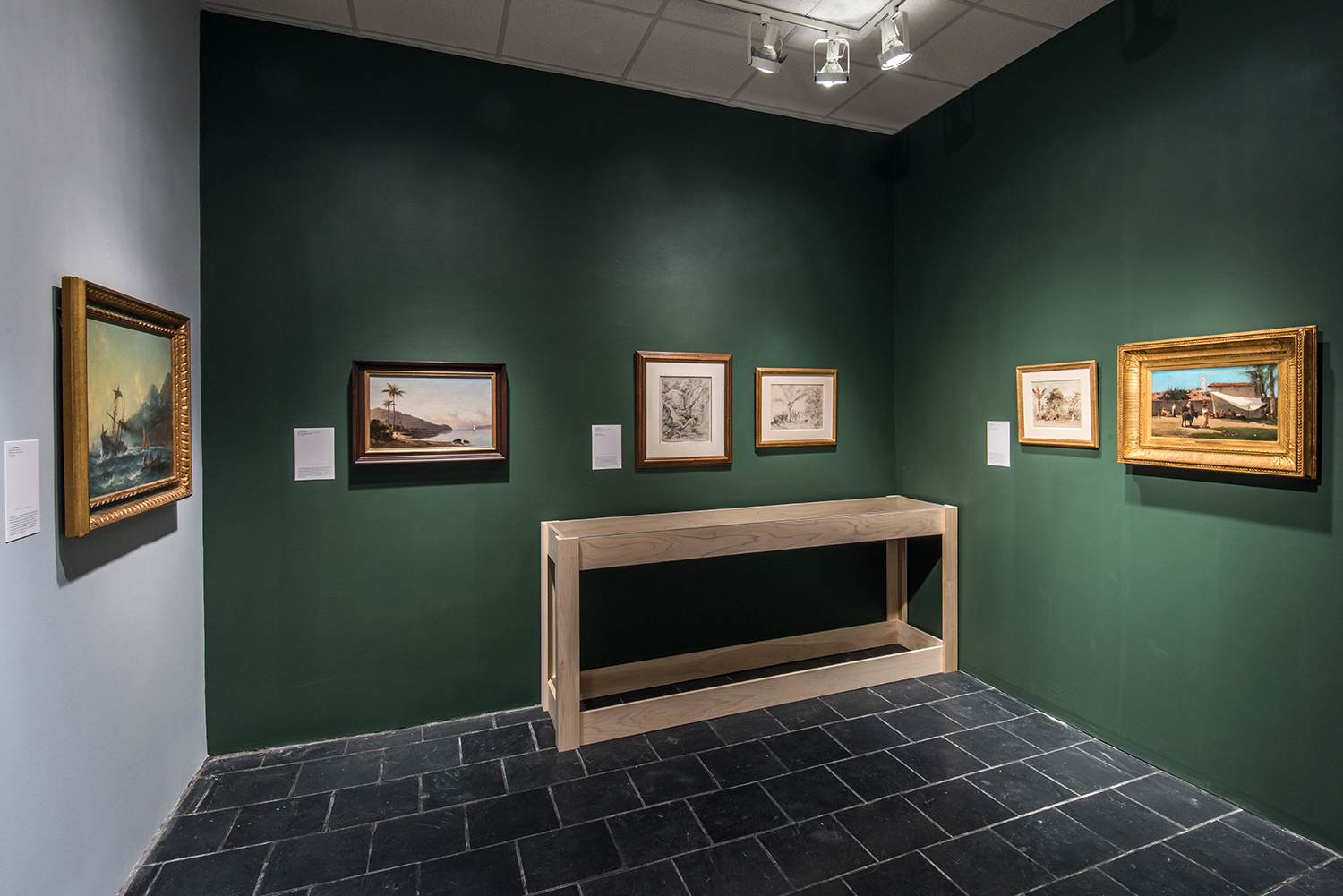
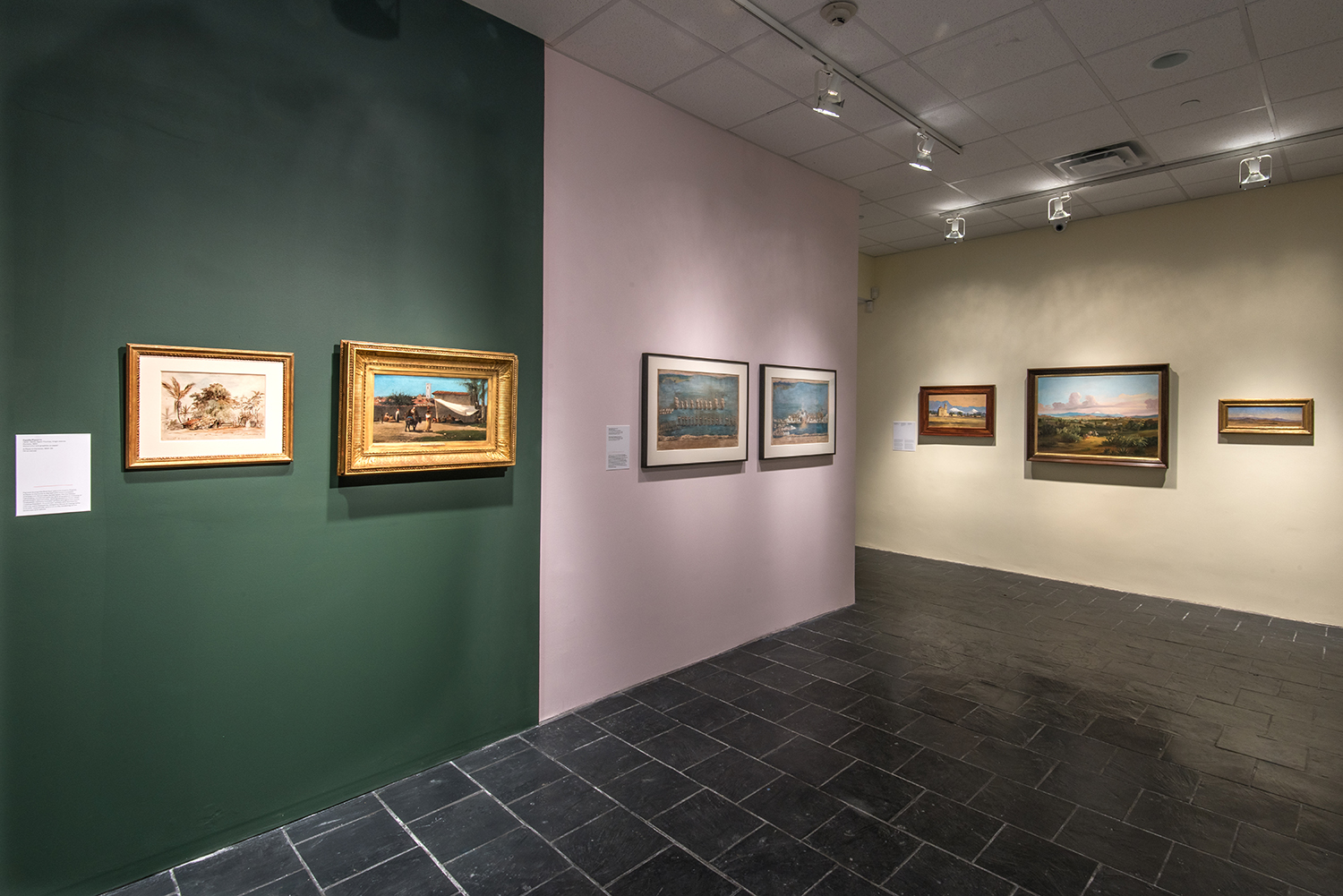
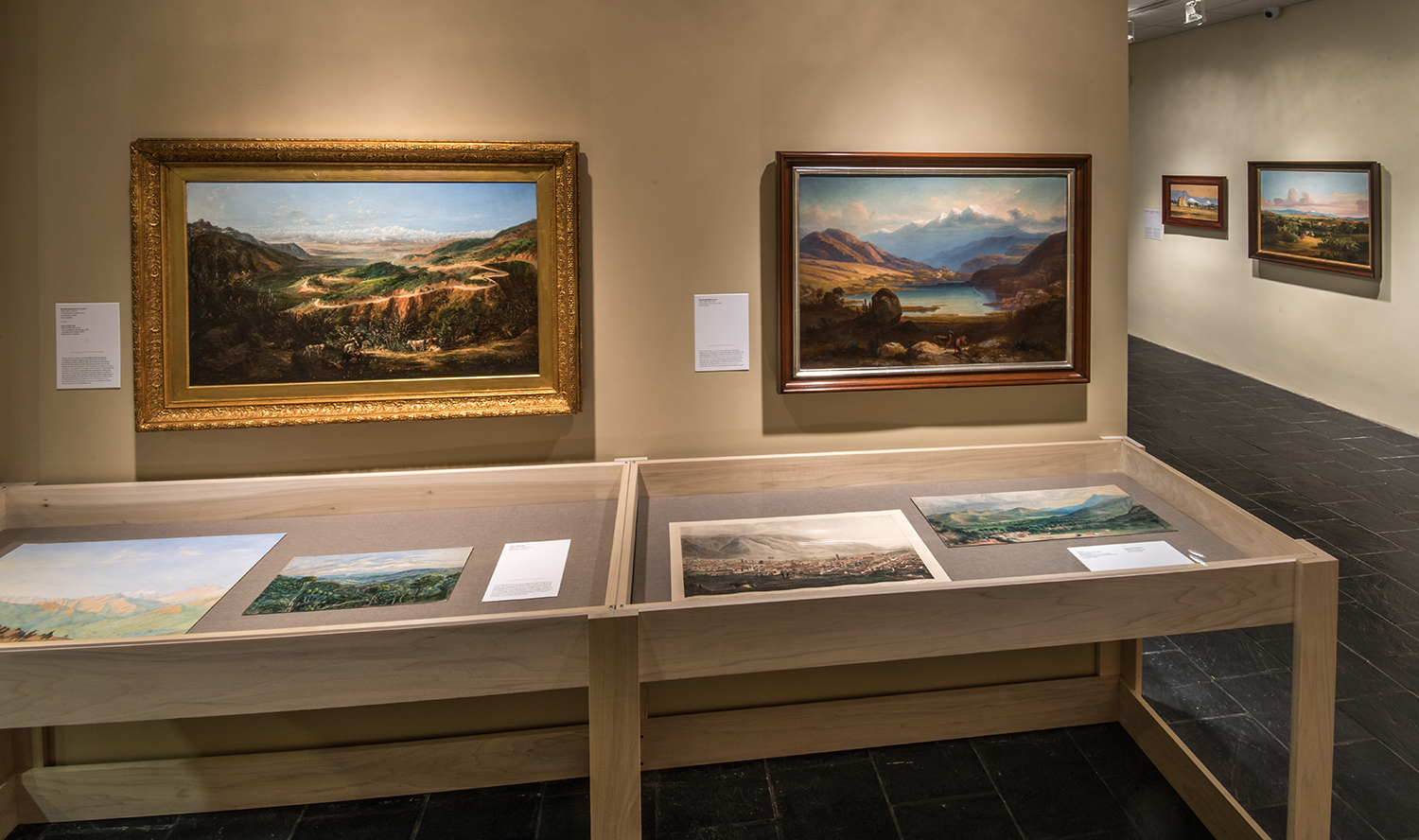
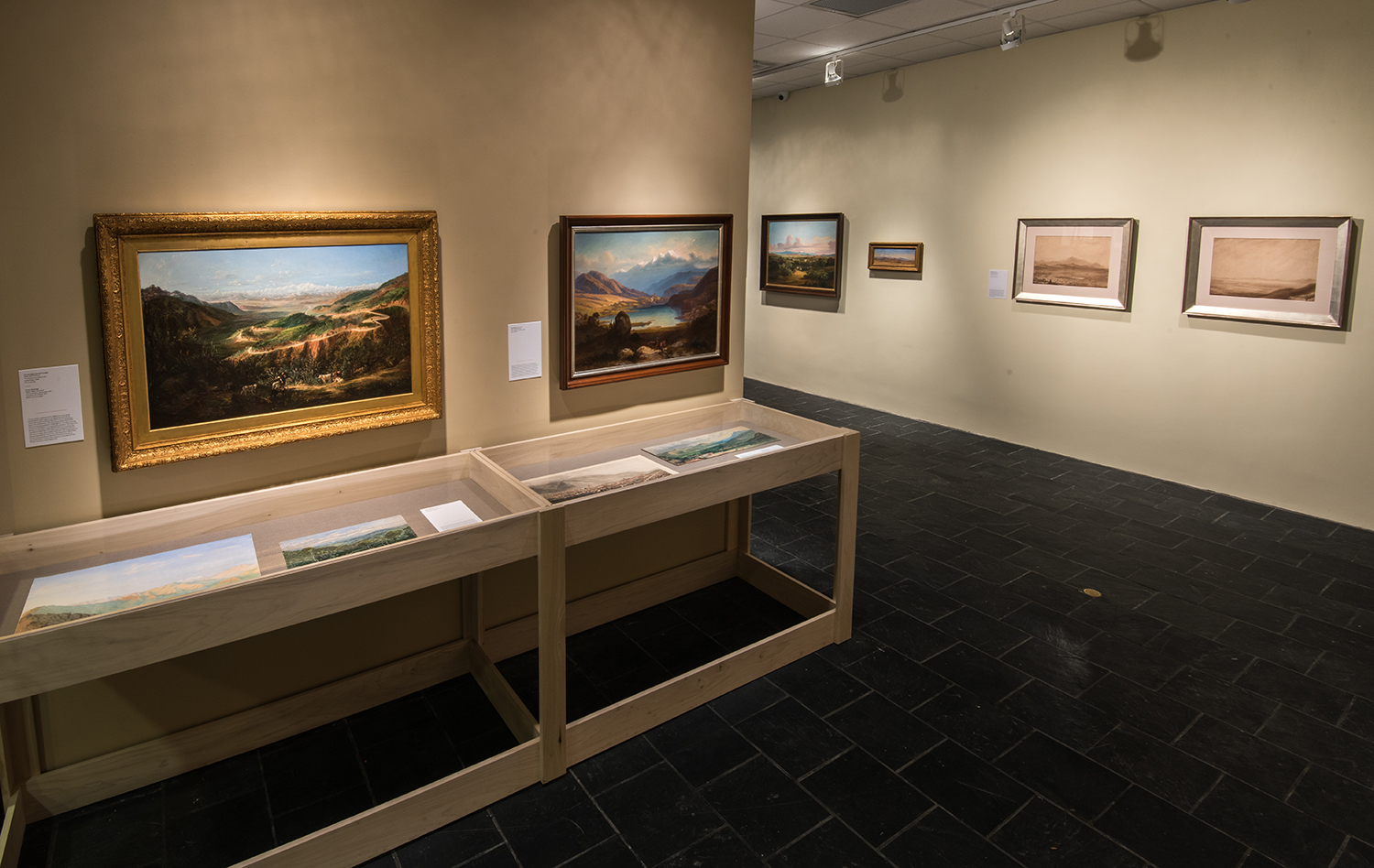
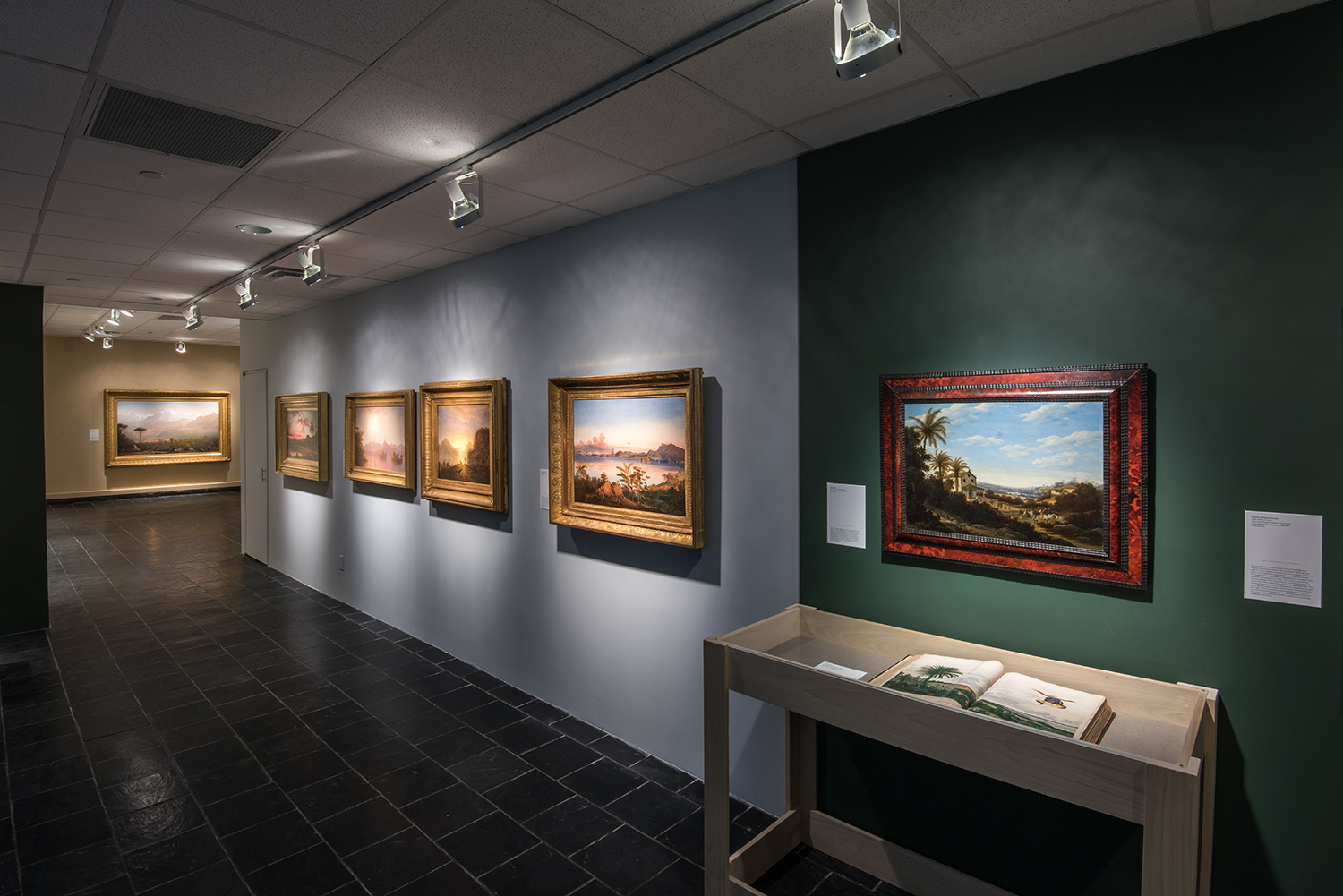
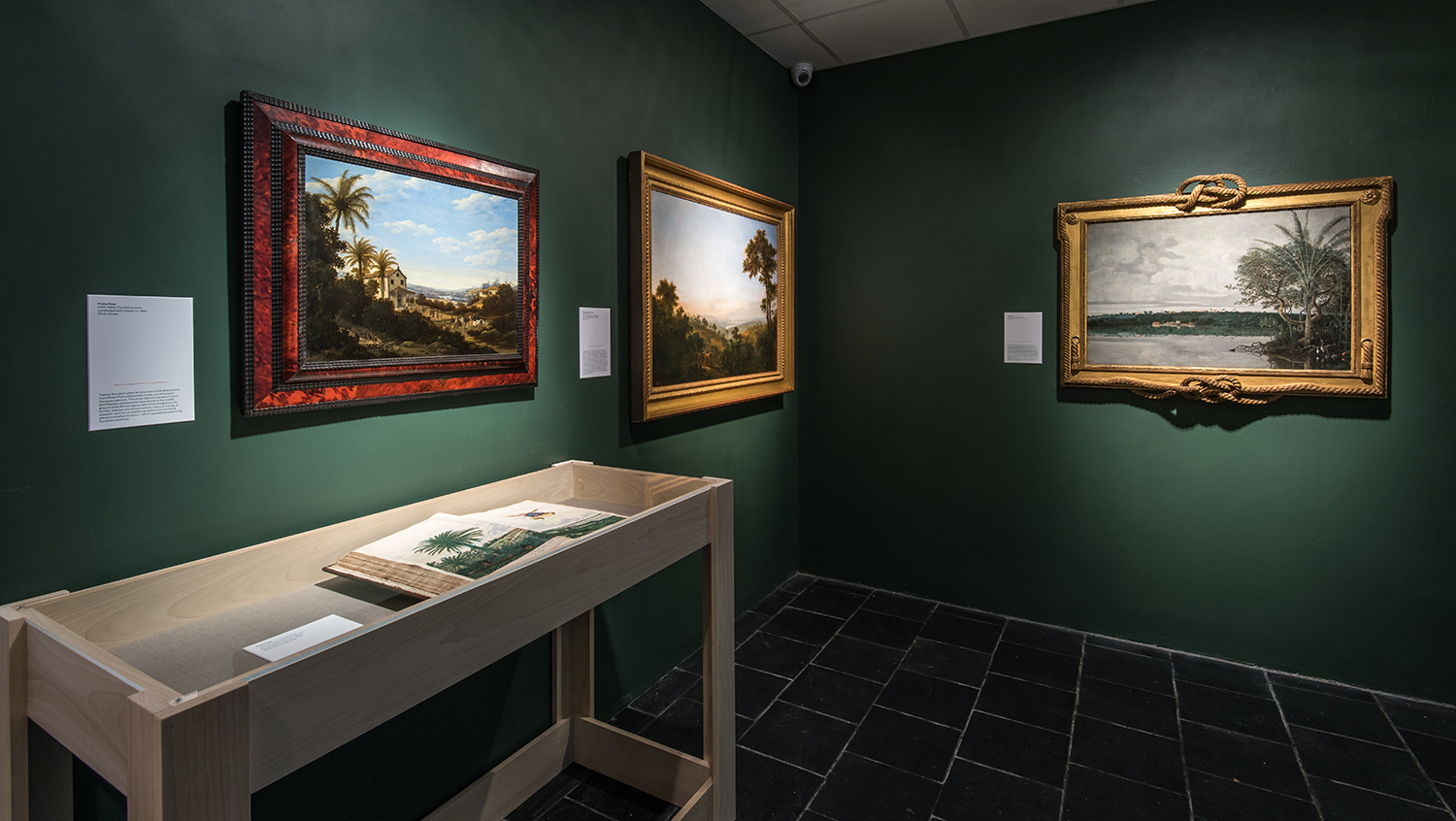
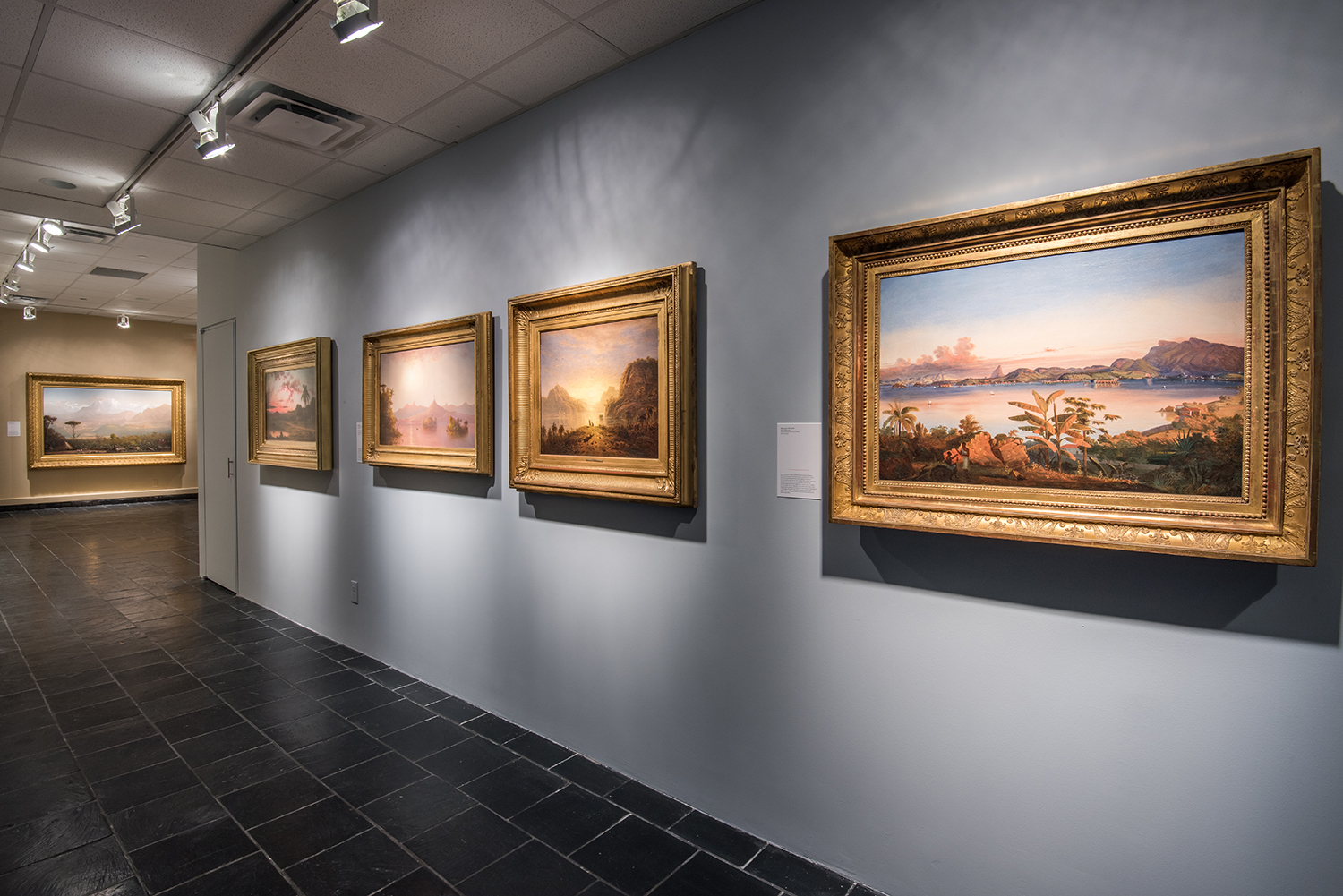


Installation view: Boundless Reality: Traveler Artists’ Landscapes of Latin America from the Patricia Phelps de Cisneros Collection, Hunter College Art Galleries, 2015. Photo by Enrique Shore.
Boundless Reality
Traveler Artists’ Landscapes of Latin America from the Patricia Phelps de Cisneros Collection
Curated by Harper Montgomery, Patricia Phelps de Cisneros Professor of Modern & Contemporary Latin American Art
On view at the Leubsdorf Gallery and Americas Society
October 30, 2015–January 23, 2016
Opening reception: October 28, 5–7pm
Leubsdorf Gallery
Hunter West Building
132 East 68th Street
New York, NY 10065
Hours: Wednesday–Sunday, 1–6pm
Boundless Reality: Traveler Artists’ Landscapes of Latin America from the Patricia Phelps de Cisneros Collection is the culmination of a multiyear collaborative effort between Hunter College, The Graduate Center at City University of New York (CUNY), Americas Society, and the Colección Patricia Phelps de Cisneros (CPPC). The exhibition is organized by the Hunter College Art Galleries and curated by Dr. Harper Montgomery, the Patricia Phelps de Cisneros Professor of Latin American Art and students from her master’s course, Curatorial Practicum: Subjectivity and the Nineteenth-Century Latin American Landscape. The exhibition includes a selection of major works from the collection Traveler Artists to Latin America, which Gustavo Cisneros and Patricia Phelps de Cisneros began in 1997. The works span three and a half centuries of Latin American landscape art, from the arrival of Dutch Colonial artist Frans Post to Brazil, and continuing with the visits of numerous traveling artists from Europe and the United States. By the late nineteenth century native-born artists were adopting landscape painting as the language of the new republics, forging a new sense of national identity.
“When my wife Patty and I began collecting landscapes of Latin America by traveler artists to and within the region, we recognized that the images they recorded represented a way to perceive a world whose boundaries transcended political borders. They further provided an understanding of Latin America as a network of interconnected ideas, traditions, and fruitful exchange,” said Fundación Cisneros/Colección Patricia Phelps de Cisneros Co-founder Gustavo Cisneros. “The responsibility of the collector to preserve the heritage of artworks involves more than the crucial work of caring for them physically. It involves giving them new avenues of correspondence with other works of art and other traditions, and creating new scholarship that reveals previously unseen connections and discovers new facts. Patty and I are especially proud of the students whose research and curatorial work contributed to this exhibition. Their work has added important gains to the intellectual preservation that will allow these works to live for a new generation, who will no doubt discover in them national identities with more in common than previously imagined.”
The show includes drawings, watercolors, paintings, photographs, and books by key figures including Ferdinand Bellermann, Frederic Edwin Church, Marc Ferrez, Auguste Morisot, Camille Pissarro, and José María Velasco among others. Two paintings in the exhibition by Frans Post and a book by Willem Piso predate the nineteenth century, but most of the works in the exhibition were made during the 1830s, ’40s, and ’50s, the years following the Latin American wars of independence.
Boundless Reality: Traveler Artists’ Landscapes of Latin America from the Patricia Phelps de Cisneros Collection is organized in two distinct but related sections. The installation at the Leubsdorf Gallery at Hunter College presents works that convey to what extent the European tradition of landscape painting underwent changes in the process of being applied to represent Latin American landscapes. Auguste Morisot’s 1886 expedition up the Orinoco River serves as the centerpiece of Americas Society Art Gallery’s component of the exhibition, which includes photographs, drawings, and prints. Morisot’s archive exemplifies the emergence of photography in the nineteenth century and its relationship to the conventions of painting and representing the exotic landscape.
Boundless Reality serves as an exploration into a genre that is receiving increasing scholarly attention. While Alexander von Humboldt’s observations on the aesthetics of the continent’s extraordinary scenery were influential, it was only after the colonies obtained independence from Spain that the New World opened up to the gaze of foreign artists who arrived individually, drawn by their own aesthetic interests, or collectively in commercial missions dispatched by foreign governments. The artists’ renderings document the ways in which travelers encountered and experienced the region as well as the challenges they faced to describe an aesthetic reality for which the language of conventional Western art was inadequate.
The title of the exhibition is inspired by a reflection by the Nobel Prize-winning Colombian novelist Gabriel García Márquez, who stated that language was not enough to describe the “boundless reality” that is conveyed by the extraordinarily rich nature of Latin America and the Caribbean. Boundless Reality reveals that the landscape tradition was not reserved for artists who traveled great distances to record the geography and the people they encountered in the Torrid Zone. It includes native-born artists who drew in the European landscape tradition to reflect on their own culture, as exemplified by José María Velasco’s paintings of Mexico, which not only embrace the European Enlightenment sensibility, but also a growing sense of national identity.
“This project brings to light new research on an area whose enormous artistic interest and scholarly importance are just now coming to be recognized by art historians and scholars. Viewing these landscapes by artists of many different origins suggests that, even though their orientations may differ, the demands of representing Latin America generated a transnational language that was well suited to the new nineteenth-century capability for enormous mobility,” said Dr. Montgomery.
Traveler Artists: Landscapes of Latin America from the Patricia Phelps de Cisneros Collection, an authoritative new book on the early history of landscape painting in Latin America, is published on the occasion of this exhibition. This richly illustrated volume introduces informative new essays on the paintings and drawings from the Colección Patricia Phelps de Cisneros—including some works that are not on view in the exhibition. The publication contributes new scholarship to this burgeoning field and offers original research on fifty-two artworks by such key figures as Frans Post, Frederick Edwin Church, José María Velasco, and Auguste Morisot, many of which are reproduced for the first time. Graduate students from Hunter College, CUNY, and the Graduate Center, CUNY, contributed research and texts to the publication.

